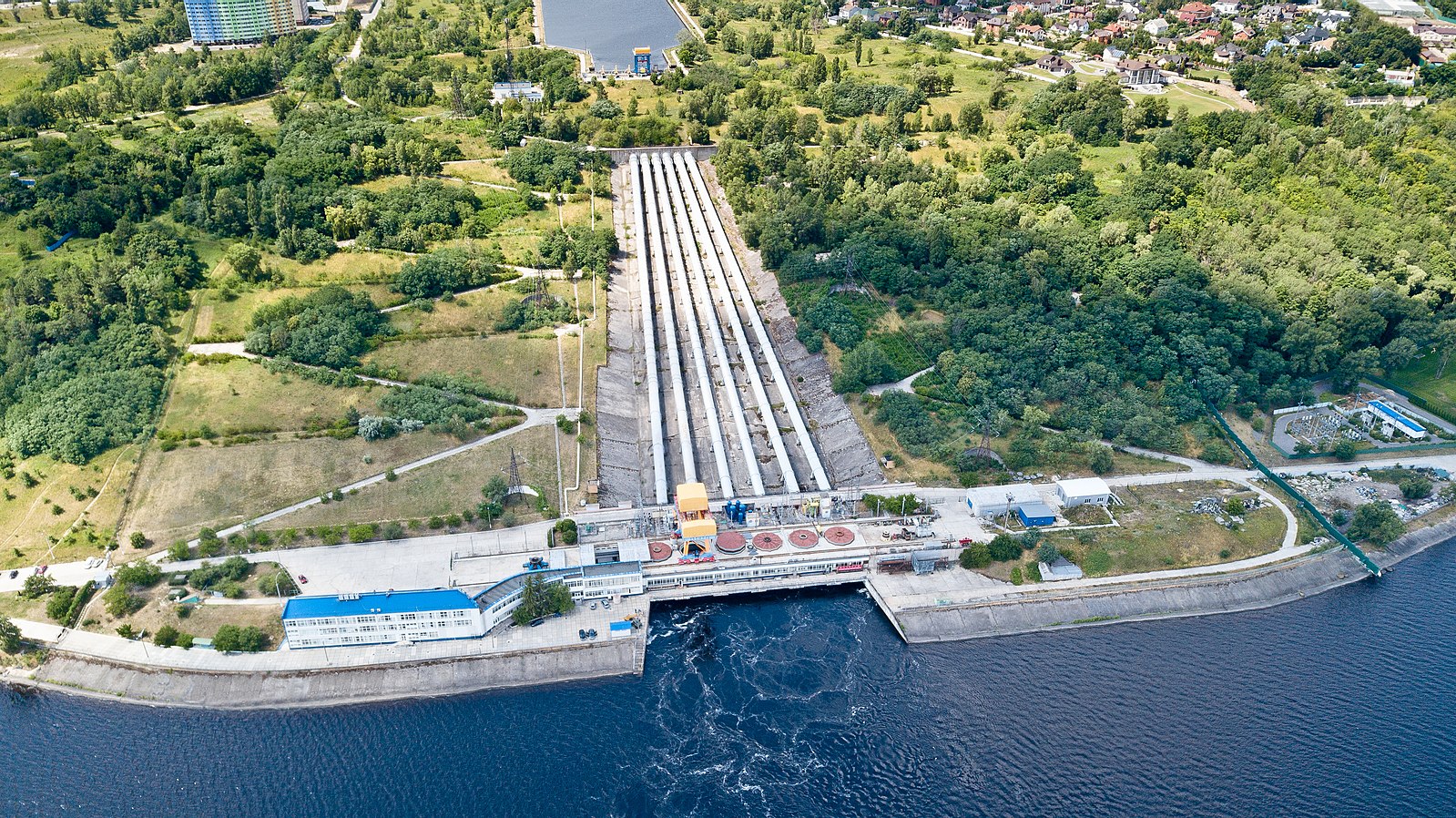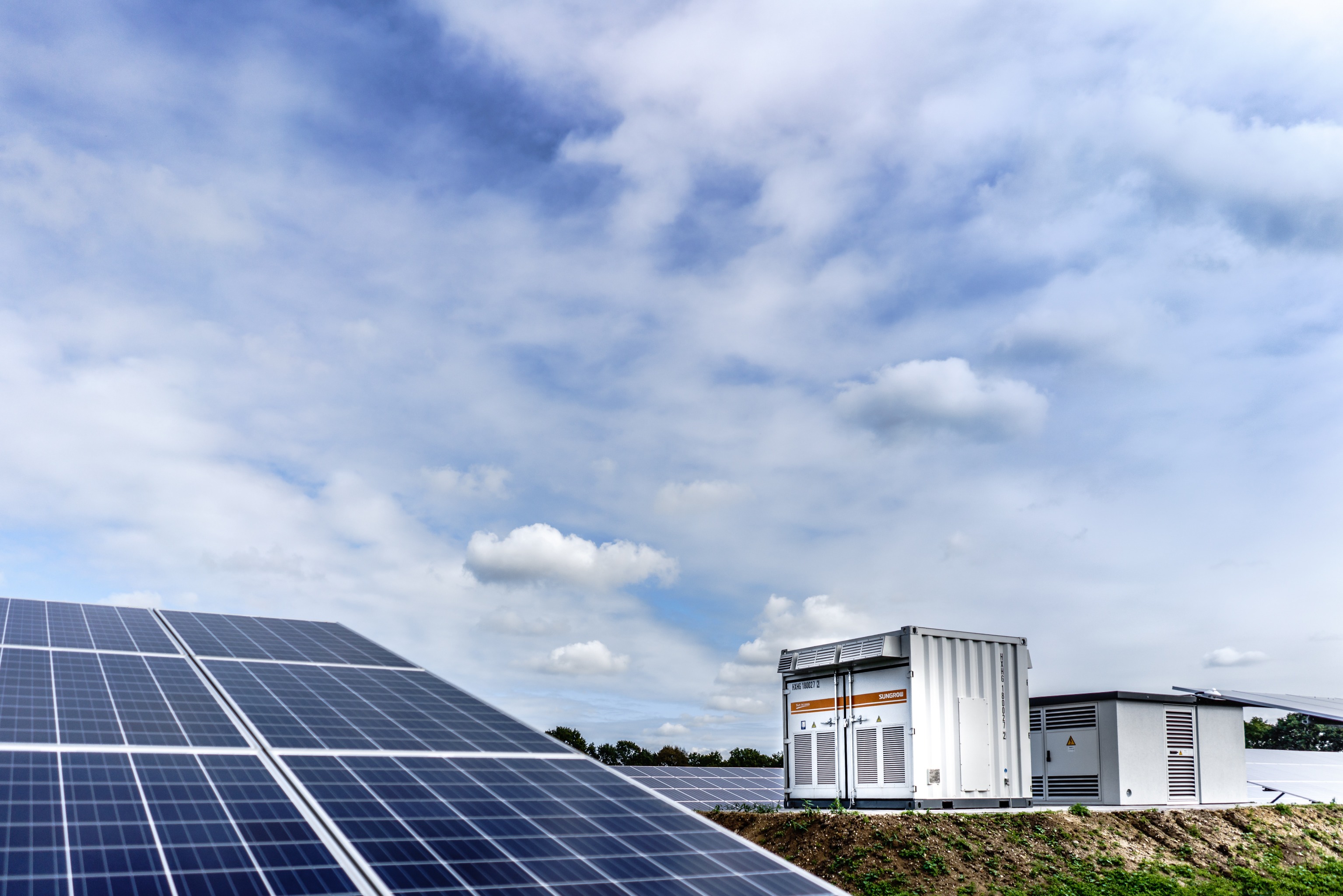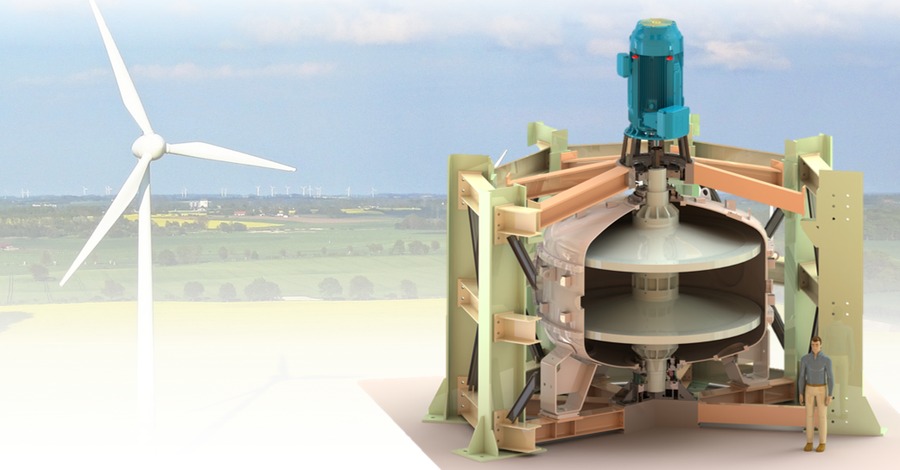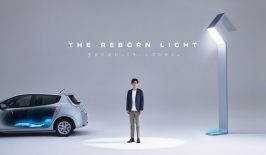By 2030, 65 percent of our electricity is to come from renewable energy sources according to Germany’s energy transition plan. Overambitious? Not in light of the urgency to drastically reduce CO2 emissions. Nevertheless, some consider a departure from fossil fuels to be risky. Critics complain primarily about the fluctuating availability of electricity from renewable energy sources.
The fact that many renewable energies are subject to fluctuations is clear. Take solar energy, for example. The production of solar power is particularly high in midday summer hours while very low in the evening winter hours – in other words, precisely when our demand for electricity is at its highest. In addition to photovoltaics, solar thermal, wind, and wave power are also impacted by such fluctuations. By contrast, biomass, geothermal energy, and hydropower have the highest availability among renewable energy sources.
Nevertheless, it’s possible to ensure a reliable power supply with renewable energy sources under the following conditions:
1. Our energy supply system becomes more flexible. If energy generation from the sun and wind is insufficient, for example, we can pick up the slack with other, abundantly available renewable energy sources. Flexible biogas plants could bridge such bottlenecks.
2. Energy storage systems are deployed at scale. Surplus energy is saved for later use, particularly for periods when demand exceeds current production.
3. Digitalisation is promoted and smart grids are developed to facilitate interactions between producers, consumers, and storage facilities in an increasingly complex, decentralised electricity market.
Energy Storage: A Problem with Many Solutions
Indeed, there are already a number of solutions in the field of energy storage.
1. A basic distinction is made between short-term and long-term storage. The range extends from milliseconds to years.
2. Other characteristics include storage capacity, i.e. how many kilowatt hours are contained in one kilogram of the storage medium, and efficiency, i.e. how much of the stored energy is ultimately available as electrical energy. Storage duration, storage capacity, and efficiency depend largely on the type of storage system: electrical, chemical or electrochemical, mechanical or thermal.
3. We don’t yet have a super solution, but a more flexible energy supply based on different sources requires the use of different technologies. Electrical energy storage systems, for example, are capacitors that can only store energy for a very short time but are extremely efficient. Electrochemical storage systems such as batteries (e.g. lithium-ion batteries) are already more suitable for storing renewable energies because they can compensate for daily fluctuations.
Pumped Storage Still Reigns Supreme
In Germany, as well as globally, pumped storage hydropower plants remain the most proven storage system as they are comparatively inexpensive and so far the only way to store electricity on a large scale. Along with compressed air and lift storage, pumped storage has the largest market share among mechanical energy storage systems, at 90 percent.
In principle, the way pumped storage works is very simple: Water is pumped up a slope into a reservoir using surplus energy from renewable sources. When needed, gravity allows the water to flow back down, generating energy via turbines.
Until now, it was assumed that the technology’s specific requirements limited its potential for expansion. But Australian researchers have come to a different conclusion: Using a geographic information system (GIS) analysis, they have found 616,000 potentially suitable sites worldwide that together could store about a hundred times more energy than would be required for a purely renewable electricity system. And that doesn’t include fallow sites like existing reservoirs and old mining sites.
Accordingly, even if there are suitable sites for new pumped storage power plants, construction should be considered from an ecological perspective. Each plant is a significant intrusion on nature and ecosystems. Watercourses are dammed and diverted, and storage reservoirs are sometimes concreted or asphalted to withstand the regular stress and erosion caused by changing water levels. One ecologically sound solution is to repurpose brownfield sites.
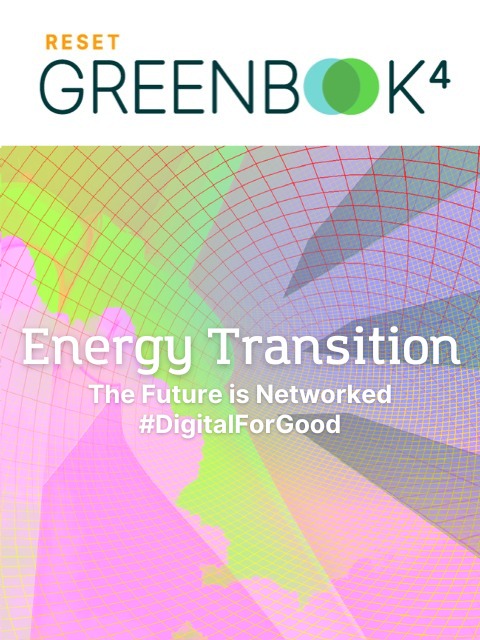
The 1.5 degree target is unattainable without a real transformation of our energy system. But how can it succeed? What are the energy sources of the future? What digital solutions are ready and where are innovations needed? And how can the transformation be driven forward?
The RESET Greenbook “Energy Transition – The Future is Networked” presents digital, innovative solutions and sheds light on the background.
There is also hope in new, less invasive approaches. A few years ago, the Fraunhofer Institute tested a pumped storage system using giant concrete spheres on the seabed. The project, which was initially carried out at Lake Constance, has since expired and would now have to be tested under real conditions, i.e. in the ocean.
Batteries – Where Does the Journey Lead?
Battery storage systems such as lithium-ion batteries, lead-acid batteries, and redox-flow batteries are among the electrochemical storage systems. Lithium-ion batteries in particular are widely used today; hardly any smartphone, laptop, or electric car can do without them. Battery storage systems are also used to store electricity from solar and wind power plants, though so far mainly for smaller scale power requirements such as in single- and two-family homes.
The cost of such energy storage devices is still relatively high as they can only support a limited number of charging cycles. In addition, the storage capacity decreases relatively quickly due to frequent charging and discharging, which hampers the possible applications.
Nevertheless, battery storage is increasingly being tested on a larger scale, such as in neighbourhoods. Here, a large number of decentralised energy sources and households are interconnected via a smart grid, which jointly use the battery as a regional buffer. Fraunhofer ISE, for example, is investigating the possibilities of neighbourhood storage in various research projects.
In the future, electric car batteries could also be used as temporary storage. In the so-called vehicle-to-grid solution, excess energy is stored in the batteries of electric cars and fed back in when needed. One such solution is being pursued by the Munich-based company The Mobility House. Using bidirectional wall boxes, owners of solar power systems can use their car battery as a giant power bank and direct the surplus electricity from their roof into their electric car and then back into the household grid as needed. However, for car batteries to function as “swarm storage” that can absorb surplus electricity from the energy grid on a larger scale, the corresponding infrastructure still needs to be created – and, of course, the number of electric cars needs to increase significantly.
Improving the Life Cycle Assessment of Batteries
In particular, lithium-ion batteries are not without controversy from a sustainability perspective. Both the mining of the raw materials needed for a battery and its disposal are environmentally harmful and ethically questionable.
One solution to improve the life cycle assessment of batteries is to give them a “second life.” Batteries that no longer provide the power required for use in electric cars still have more than 70 to 80 percent energy content and can be converted into stationary electricity storage units. At Amsterdam’s football stadium, the Johan Cruyff Arena, for example, such “second-life storage” captures energy peak loads during major events.
According to a VDE study, the greatest potential for increasing the sustainability of batteries lies in the materials. Solid-state batteries, in which an electrolyte made of solid material is used instead of a liquid electrolyte, are considered the most likely alternative to lithium metal batteries.
On a laboratory scale, batteries made of solid electrolytes have already proven themselves, such as the lithium-sulphur battery. Their raw material, sulphur, is inexpensive and available in large quantities as an industrial waste product. In addition, the raw material costs of a metal-sulphur battery are lower than those of a comparable lithium-ion system of the same capacity.
Lithium can also be replaced, and one alternative is sodium-ion batteries. There is plenty of sodium in the oceans, as well as in the earth’s crust, and it can be obtained cheaper and in a more environmentally friendly way than lithium. Furthermore, the batteries do not require cobalt, copper, or nickel, and current production methods do not need to be altered. As it stands, however, sodium-ion batteries have a lower energy density than lithium-ion batteries. This makes sodium-ion batteries a promising alternative wherever weight is not an issue such as in stationary battery storage power plants for wind energy and solar energy.
When it comes to storage material, researchers are also coming up with unusual ideas. Eggshells that normally end up in organic waste, for example, are ideal for making low-cost lithium-ion capacitors. Other ways to reduce the ecological footprint of batteries include production that feeds on renewable energies as well as a circular economy for batteries with intensive recycling.
Power-to-X
The conversion of electricity into various products (power-to-X) has been gaining momentum for several years. “Power” here stands for electricity surpluses that are converted into various other forms of energy (“X”), for example power-to-gas (generation of gas from electricity) or power-to-heat (generation of heat from electricity).
Among the power-to-gas processes, the production of hydrogen in particular is gaining enormous importance. Hydrogen is produced by means of water electrolysis and the use of electric current. Through chemical conversion, the gas can be further transformed into chemicals and fuels such as methanol and ammonia. This process is known as power-to-liquid. Whether as a gas or a liquid, both allow electricity to be converted into products with high energy densities in which renewable electricity can be stored for long periods of time and transported over long distances.
The goal of power-to-heat is to integrate electricity from renewable sources into the heating sector. To this end, large-scale instantaneous water heaters or electric industrial furnaces and electrode boilers, for example, as well as direct current and storage heaters and electric heat pumps, would be powered by renewable electricity. In this way, not only individual buildings but also entire city districts could be supplied with heat and hot water in a renewable way. However, this is not yet economically feasible.
Power-to-gas processes are also not yet economical enough in most cases and are only low in CO2 – and thus sustainable – if electricity from renewable energies is used for generation, as is the case with Fraunhofer ISE. Therefore, it can be assumed that these technologies will only be ecologically and economically viable when the share of renewable energies in the electricity mix is at least 60, if not 80, percent. Until then, it is more effective to use surplus renewable electricity to feed heat pump heaters and electric cars, to further expand smart grids, and to use short-term storage such as battery and pumped storage power plants. Experts recommend that hydrogen, which remains a precious resource, should be reserved for industrial processes that require high temperatures achievable with electrical energy.
Nevertheless, there are always technological breakthroughs that bring competitive, renewable hydrogen within reach.
The Latest Innovations
As the aforementioned technologies show, the focus of energy storage systems is usually on economic efficiency and, from a sustainability perspective, their environmental and social footprint. Ever new innovations in the field of energy storage reveal progress on these fronts.
Back to Basics: Storing Energy in Salt and Stones with the Carnot Battery
One method of saving renewable energy for later use is to store it in the form of thermal energy. In so-called Carnot batteries, electricity is converted into heat in a high-temperature storage tank and can then be stored in liquid salt, stones, or liquid metals with virtually no loss.
An exciting approach is to store thermal energy in molten salt. This concept has existed for decades but has now been further developed by using excess energy from renewable sources to create a temperature difference. The heat is stored in molten salt and the cold in a liquid similar to frost protection. When needed, the thermal energy is converted back into electrical energy.
The German Aerospace Centre (DLR) and the European CHESTER consortium has also built a prototype Carnot battery based on vapour power processes. Using an electric heat pump, the battery converts excess renewable electricity into heat. This is temporarily stored in a low-cost medium – such as water or liquid salt – and converted back into electricity when needed via a heat engine.
“Carnot batteries have the potential to become an important building block for the energy transition,” explains Prof. André Thess, Director of the Institute of Technical Thermodynamics. “This is because such thermal storage systems can be specifically integrated into tomorrow’s grids and energy systems to balance the temporally and spatially fluctuating power generation from solar and wind energy, as well as to cover peak loads.” Carnot batteries have a storage capacity of up to a thousand megawatt hours of electrical energy and could thus provide a city the size of Stuttgart with a stable supply of electricity. And because of the materials used, Carnot batteries are more environmentally friendly than conventional batteries.
Over the next few years, the scientists from DLR and the CHESTER consortium plan to test the concept on a larger scale.
Molecular Potential for Solar Power
Another approach, called molecular solar thermal energy storage (MOST), comes from a team of researchers at Chalmers University of Technology in Sweden. Here, a specially designed molecule consisting of carbon, hydrogen, and nitrogen becomes an energy-rich isomer as soon as it is irradiated with solar energy. The isomer is thus located in the solar cell itself and can be passed on in a circular process from the roof to the house’s heating system. In this form, the energy can theoretically be stored for up to 18 years.
The Grid-Stabilising Effect of Flywheels
There are also novel approaches among so-called flywheel mass storage systems. These systems store electrical energy as rotational energy. It’s a simple principle: excess energy feeds a motor that sets a flywheel in motion or increases its speed, storing energy in the process. Then, when the stored kinetic energy is needed, a generator converts it into electrical energy.
The company Adaptive Balancing Power, for example, has developed the Adaptive Flywheel based on this principle. Its design allows it to be adapted for particular applications and still be manufactured under series conditions. The efficiency of flywheel storage is 95 percent, but this type of storage can only store energy for a few minutes because the quiescent losses are very high. Therefore, flywheel storage systems are mainly important for balancing grid fluctuations.
There is progress in this field as well. Scientists at TU Dresden have recently developed a flywheel storage system with enormously high capacity. “The aim was to develop a long-lasting, dynamic, and highly efficient energy storage system that can be erected directly next to a wind turbine, where the electricity is generated and transmitted with little loss,” explains Chief Research Engineer Dr. Thomas Breitenbach.
The “Second Life” of Existing Structures
And what actually happens to all the fossil energy infrastructure when it is eventually abandoned? In fact, there are already approaches to outfit outdated structures with storage technology, thereby reducing costs and resources. A startup in Scotland, for example, is working on using disused mines as mechanical energy storage facilities. In the old mine shafts, weights are moved upward on ropes by means of energy and lowered down again when needed to convert energy. Meanwhile, the German Aerospace Centre is also conducting research into the extent to which old coal plants are suitable for the thermal storage of renewable energies.
What Obstacles Still Need to be Overcome?
The myth that a complete power supply from renewable energy sources is not possible can now be safely buried. We already have both the necessary energy sources and a host of efficient storage technologies to accelerate the energy transition. Despite the existing solutions, however, much still needs to happen for things to really take off. There remain few incentives. Fossil energies continue to be heavily subsidised in Germany and around the world. Every year, governments spend around half a trillion USD to keep the price of fossil fuels artificially low – around three times as much as is put into subsidies for renewables and storage technologies. In addition, those who feed renewable energy into the power grid receive a fixed payment independent of demand. Thus, wind power operators, for example, do not see sufficient benefit in investing directly in storage technologies.
Moreover, as the above examples show, many innovations are still in the test phase. More support is needed to accelerate the shift of such developments into practice. However, as the areas of energy generation, heat supply, and transportation increasingly converge, the topic of energy storage is likely to become more important than ever in the future. The keyword here is “sector coupling” and increased development of a smart grid. Greater cooperation at the international level would also be necessary in the energy sector.
Politics in particular therefore has a key role to play, setting the right levers and funds in motion for sensible measures and subsidies to advance the energy transition.
Author: Lena Strauß, RESET-Redaktion (June 2019). Last update: Sarah-Indra Jungblut, RESET-Redaktion (June 2022).

